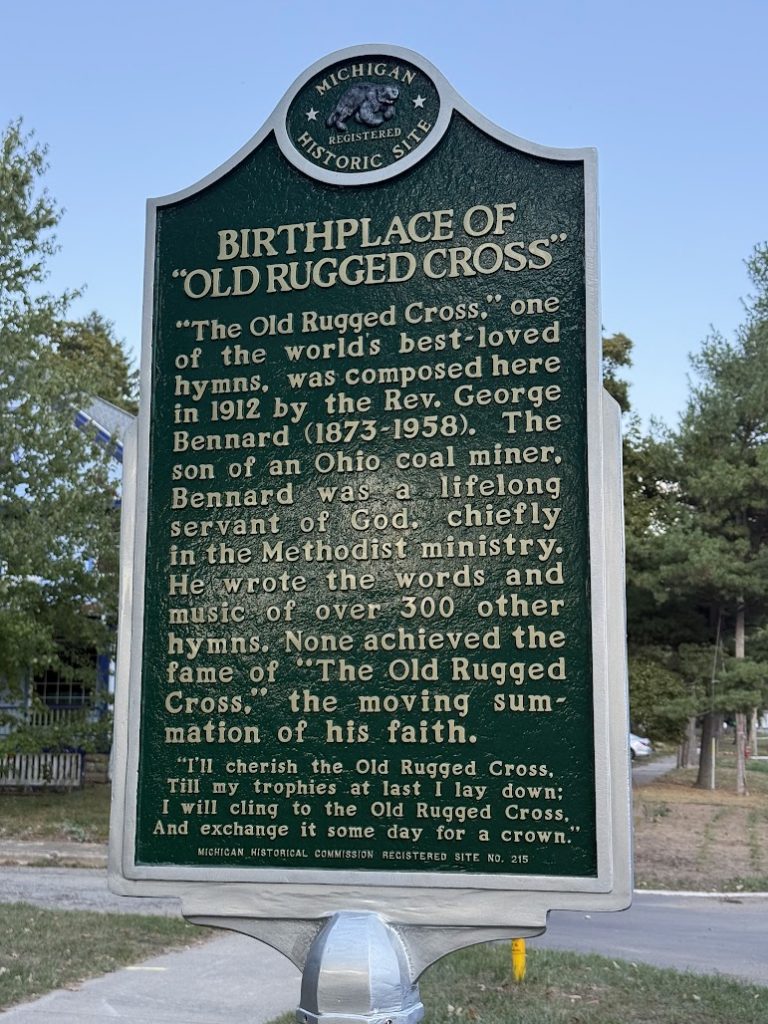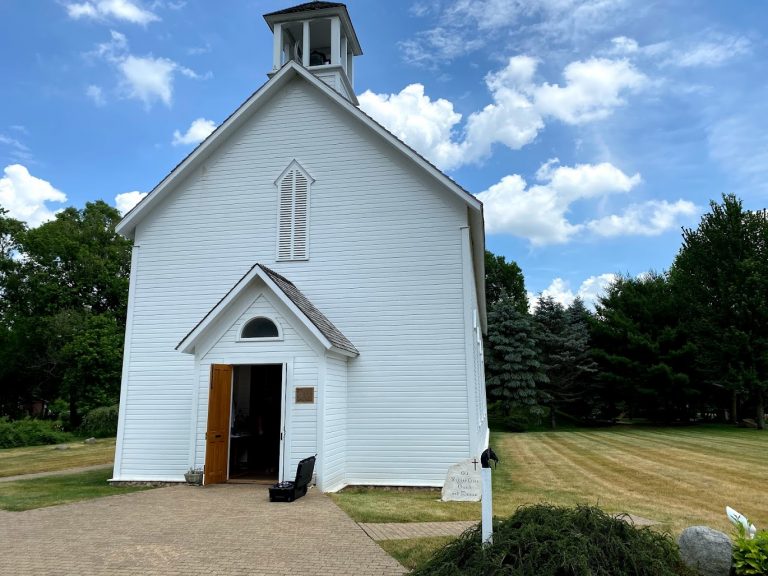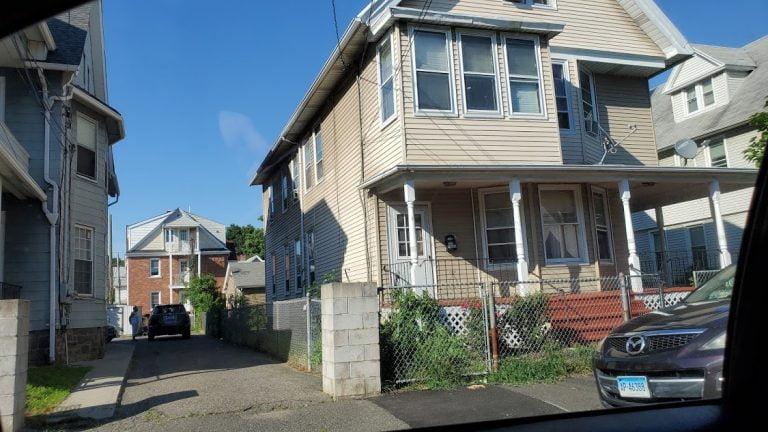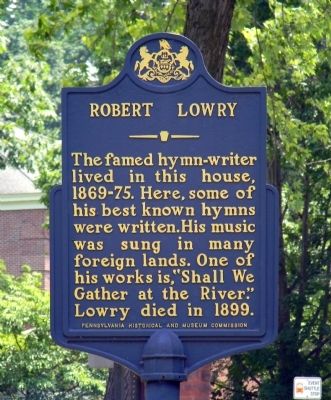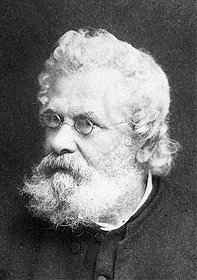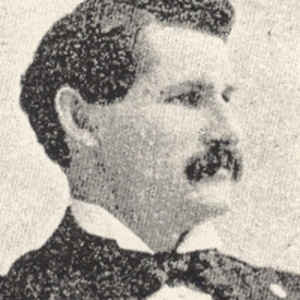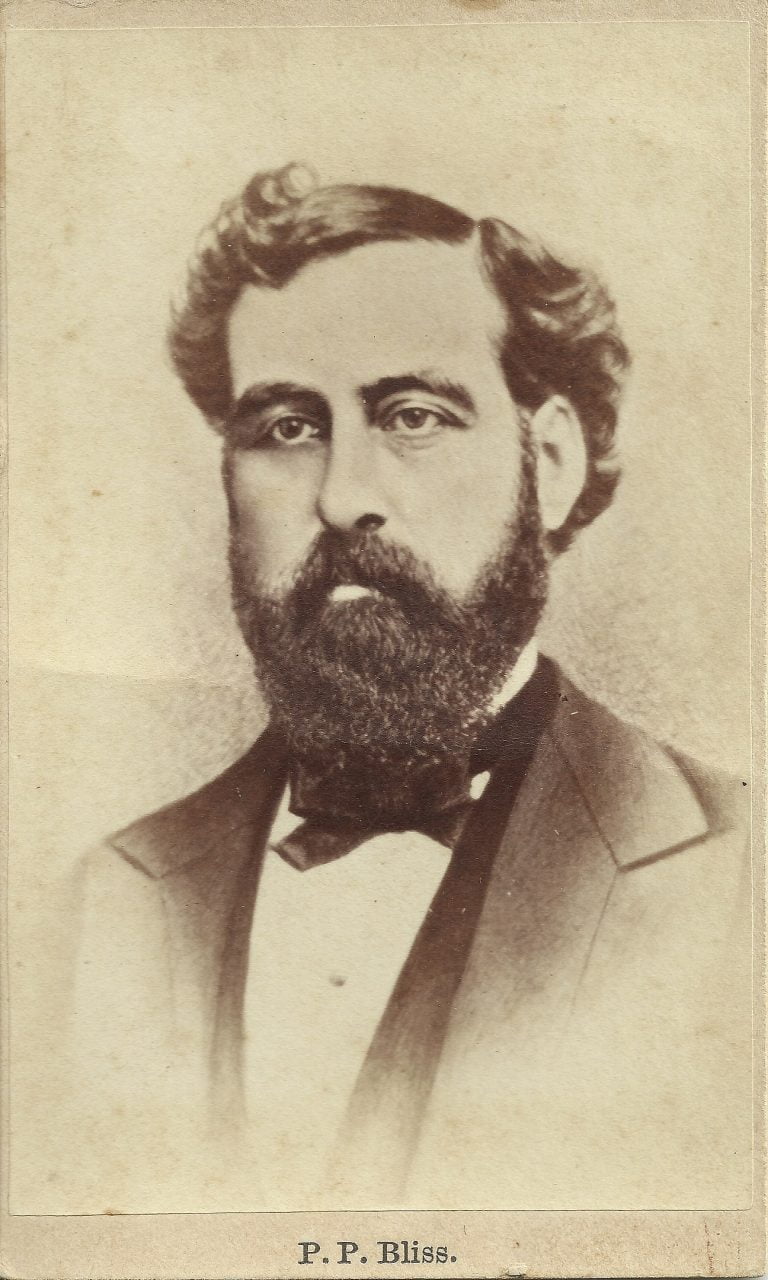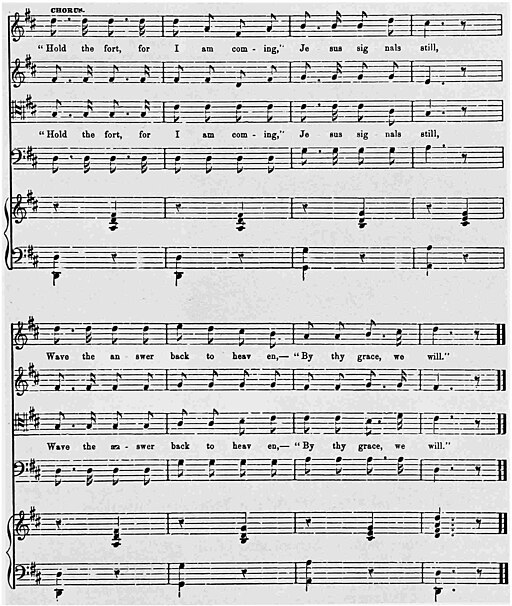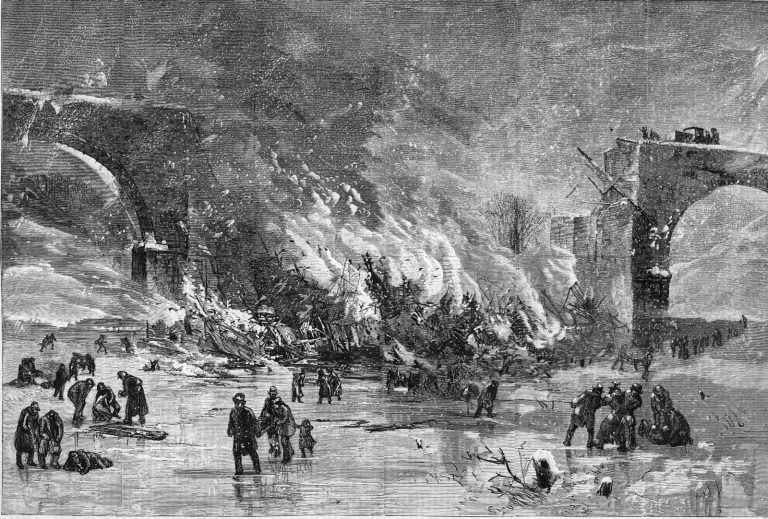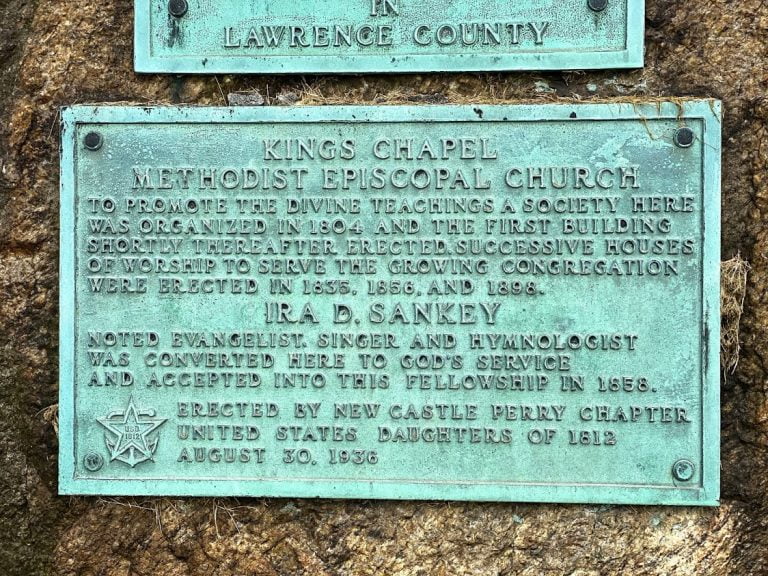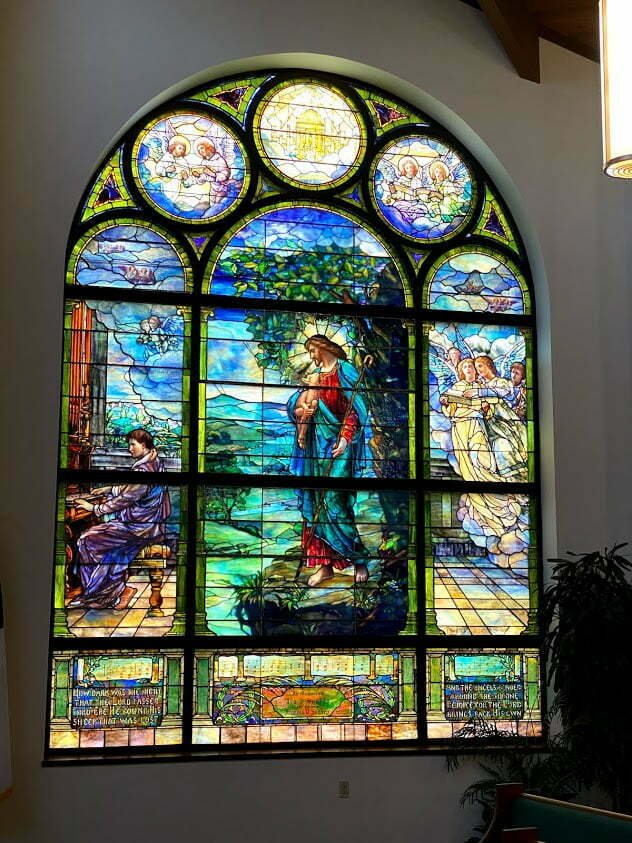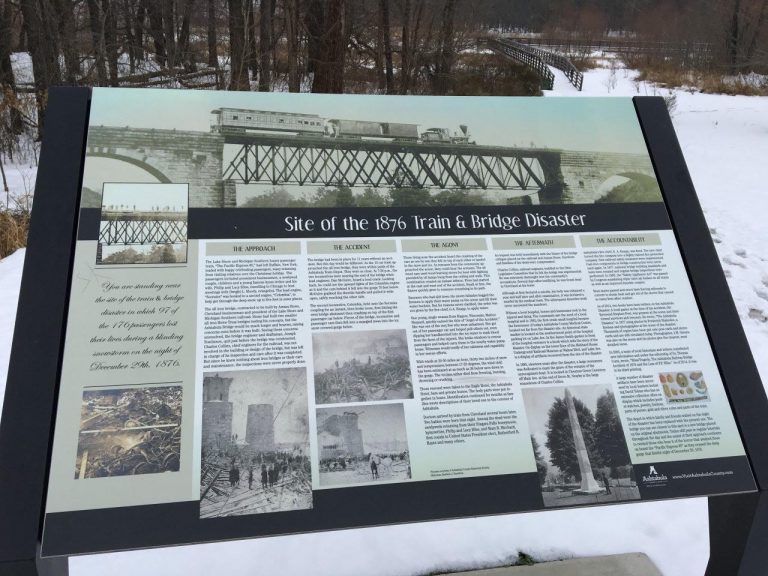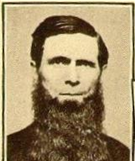Favorite
The Old Rugged Cross is one of the most beloved – and most claimed hymns! Our Christian Heritage has been to the Old Rugged Cross church on Pokagon, MI where it was first performed in its entirety and we’ve interviewed the couple that restored the church. We’ve also been to Sturgeon Bay, WI where the Friends Church is that it Read more...
Favorite
George Bennard was born in Youngstown, Ohio, but his parents would move to Iowa. When he was a teenager, he was invited to a Salvation Army meeting at 176 South 1st Avenue, Canton, Illinois, where he knelt at the “mourner’s bench” and accepted Jesus Christ as his Savior. The Canton Salvation Army still has that mourner’s bench on display. After Read more...
Favorite
From the website: The Old Rugged Cross Historical Museum is an outgrowth of a memorial cross erected and dedicated on September 14, 1954, north of Reed City, Michigan, near the home of Reverend and Mrs. George Bennard. Reverend Bennard was the author of well-loved hymn “The Old Rugged Cross” written in 1913. The museum presently contains mementos and relics not only Read more...
Favorite
Wikipedia Crosby and Rider moved to 226 Wells Street, Bridgeport, Connecticut in summer 1906 because of Rider’s cancer.[297] Carrie died of intestinal cancer in July 1907, and Phoebe Knapp died on July 10, 1908.[91] Weeks later, Ira Sankey died having just sung “Saved by Grace”, one of Crosby’s most popular compositions.[298] On May 2, 1911, Crosby spoke to 5,000 people at the opening meeting of the Read more...
Favorite
It was a five mile walk along the CB&Q railroad track, but the teenager, who also worked long hours at a coal mine, had heard about the Salvation Army meetings in Canton and decided he wanted to see what it was all about. Meetings at that time often lasted until 11 p.m., but after walking the five miles home after Read more...
Favorite
Rev. Robert Lowry was born in Philadelphia, Pennsylvania on March 12, 1826 and at age 22 entered the University of Lewisburg (now Bucknell University). After graduating at age 28 he served as pastor in West Chester, PA; New York City; Brooklyn; and then returned to Lewisburg, where he was a professor and received an honorary doctorate. Monument Text: The Read more...
Favorite
Reporter, Lawyer, and Pastor: The Author of “We Three Kings of Orient Are” Our journey fittingly begins considering the birth of Jesus. The words and music to this popular Christmas carol were composed by John Henry Hopkins Jr. in 1857, and they have been included in Methodist hymnals since 1935. Geographically, we begin at Christ Episcopal Church at Fourth Read more...
Favorite
Section S, Division 1, Lot 54 – 7 1/2 N 4 1/2 W From FindaGrave: Hymn Composer. The author of over 2,000 hymns which are still available in print, he is remembered his widely popular songs “What a Wonderful Savior!,” “Enough for Me,” “Is Thy Heart Right With God?,” “Are You Washed in the Blood?,” “No Other Friend Like Jesus,” Read more...
Favorite
James Milton Black (1856-1938) is widely known as the author of the words and music to the popular gospel song When the Roll is Called Up Yonder. He was, however, a very private person whose failure to leave much documentation about his work has frustrated musicologists for decades. No photograph of him suitable for large-size reproduction in gospel song histories, Read more...
Favorite
Although it is in a cemetery, this is not the grave of Phillip P. Bliss, rather his earthly remains are in the mass grave in Ashtabula, OH. However, because his home was in Rome, Pennsylvania, the cemetery features a cenotaph (a monument built to honor someone whose remains are elsewhere) to P. P. Bliss. Featured Image Credit: A. Burt Music, Read more...
Favorite
Image Credit: Photo: Philip P. Bliss Marker. www.hmdb.org/PhotoFullSize.asp?PhotoID=155306. The marker reads: The great singing evangelist and gospel song writer was born July 9, 1838, in a log house which stood a little distance from here. He lived and worked on the farm and in nearby lumber camps until the age of 16. Phillip Bliss was the author and composer of Read more...
Favorite
On our road trip filming the first season of Our Christian Heritage TV, we had just interviewed a Philip Bliss impersonator, who shared the life and songs of the second most famous Christian hymnwriter. Philip Bliss (1838-1876), wrote many songs in our hymnals, including “Almost Persuaded,” “Wonderful Words of Life,” “Let the Lower Lights Be Burning,” “I am so glad Read more...
Favorite
Watch a short video about Phillip Bliss filmed on location From the Marker: “Near this site, an iron truss bridge collapsed into the Ashtabula River during a blizzard, plunging a passenger train with 160 on board into the gulf below. Nearly 100 people were killed in this, one of the worst train disasters in American history. The most well known Read more...
Favorite
Kings Chapel Methodist Episcopal Church To promote the divine teachings a society here was organized in 1804 and the first building shortly thereafter erected. Successive houses of worship to serve the growing congregation were erected in 1835, 1856, and 1898. Ira D. Sankey Noted evangelist, singer and hymnologist was converted here to God’s Service and accepted into this fellowship in Read more...
Favorite
Referred to in the Moody Bible Institute archives. The story of the Ninety and Nine, one of Ira Sankey’s most beloved hymns is recorded in this beautiful stained glass window. Ira Sankey Stained Glass Window (Image Credit: Northeast – Sussman Architectural Products LLC. sussmanarchitectural.com/gallery/northeast.) This was a gift of Frances Victoria Edwards, Sankey’s wife, and was manufactured by Tiffany and Read more...
Favorite
On the east side of the river is a path to the bridge with additional information on the train wreck. Ashtabula Park, Marker on the Railroad Disaster. Photo by Randy Melchert Ashtabula Railroad Bridge, Photo by Randy Melchert Read more...
Favorite
Phillip Bliss and his wife were headed from their home in Rome, Pennsylvania, to Chicago to reunite with the evangelist D. L. Moody. On December 29th, 1876, their train, the Pacific Express was crossing a trestle bridge near Ashtabula, Ohio. The bridge collapsed, and the train cars fell into the ravine. In that day, each train car had a stove Read more...
Favorite
Listen to an audio narrative of the Ashtabula Train Disaster and learn more about Phillip Bliss in front of the hospital that was built as a result of the horrific disaster. Featured Image Credit: “The Ashtabula Disaster : Stephen D. Peet : Free Download, Borrow, and Streaming : Internet Archive.” Internet Archive, 28 Sept. 2022, archive.org/details/ashtabula_disaster_2209_librivox. Read more...
Favorite
Ballard Baptist Church, Seattle, WA We’re here in Seattle at Ballard Baptist Church, built in 1919, where Helen Lemmel was a member while she wrote Turn Your Eyes upon Jesus. She was born Mary Helen Howarth in the Manchester area of England, November 14, 1863, to a Methodist Minister. Her father took the family from England to Whitewater, Wisconsin Read more...
Favorite
Hymn History: Bringing in the Sheaves & Author: Knowles Shaw “His nickname was ‘The Singing Evangelist.’” (Graham McKay) The Origin of the Hymn “Bringing in the Sheaves” Few hymns capture the spirit of Christian labor and joyful harvest quite like “Bringing in the Sheaves.” Its simple, earnest call to sow in faith and reap in joy has encouraged countless Read more...
